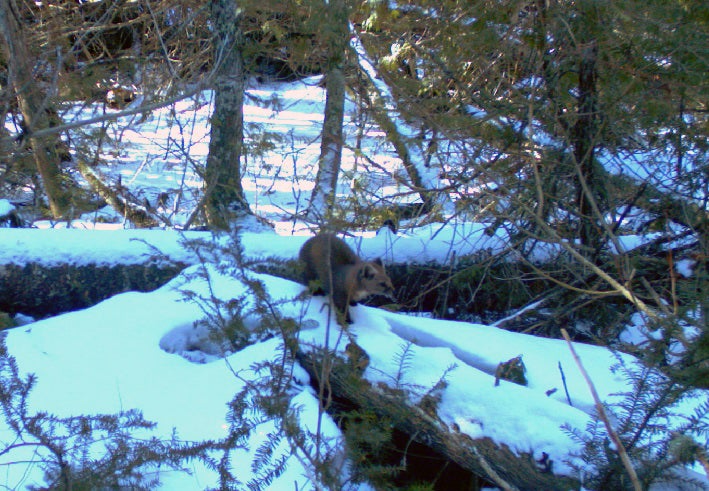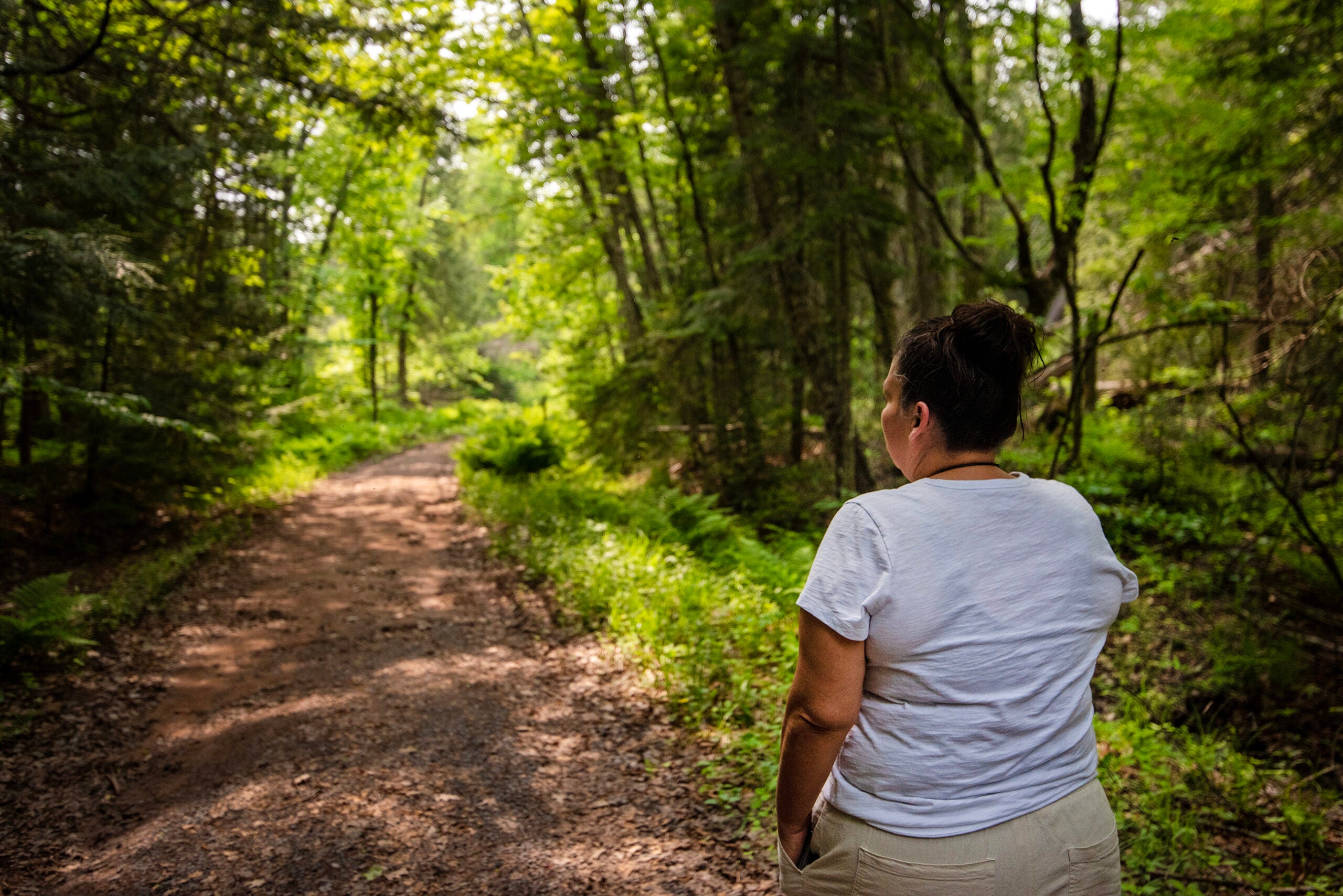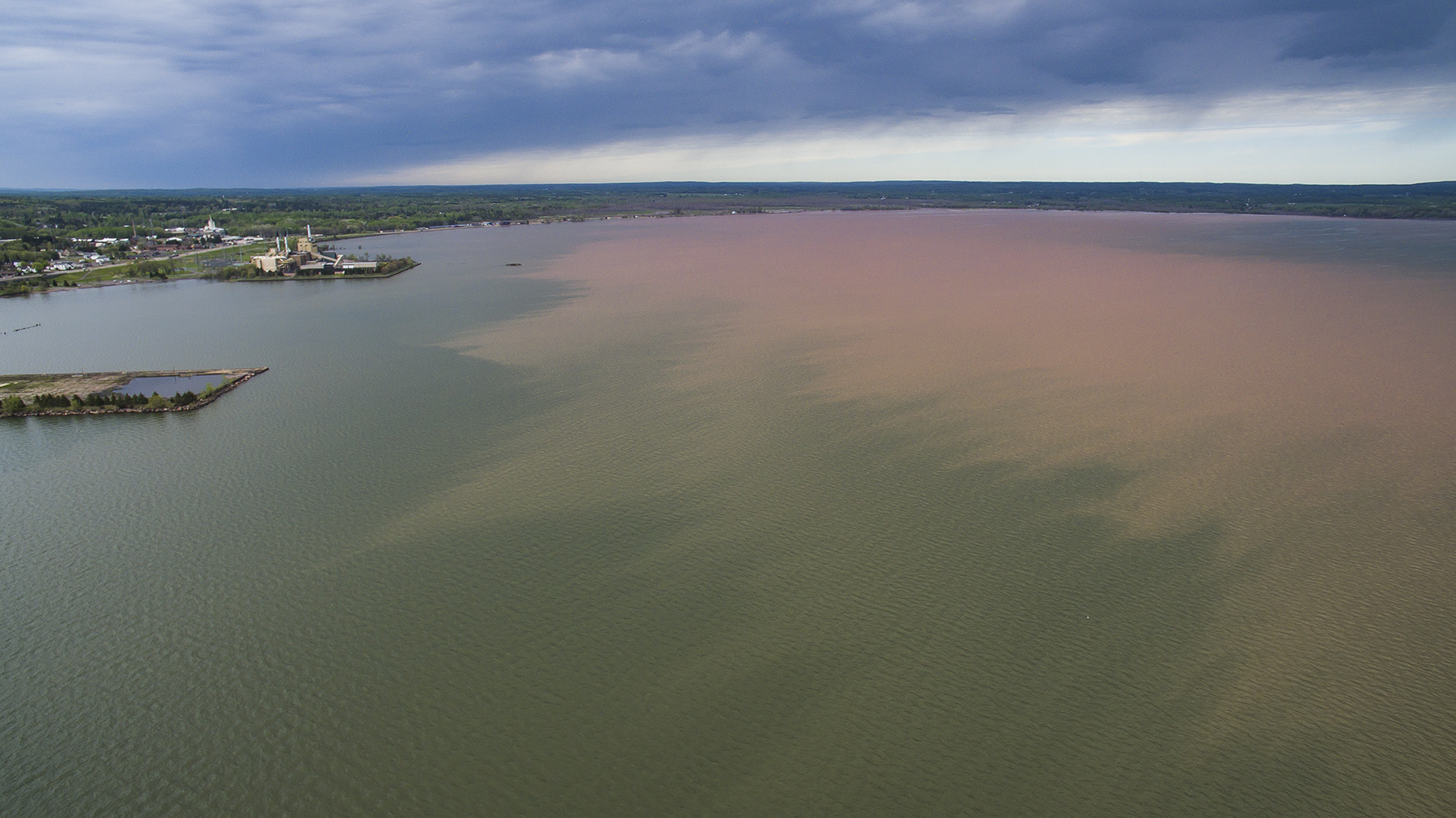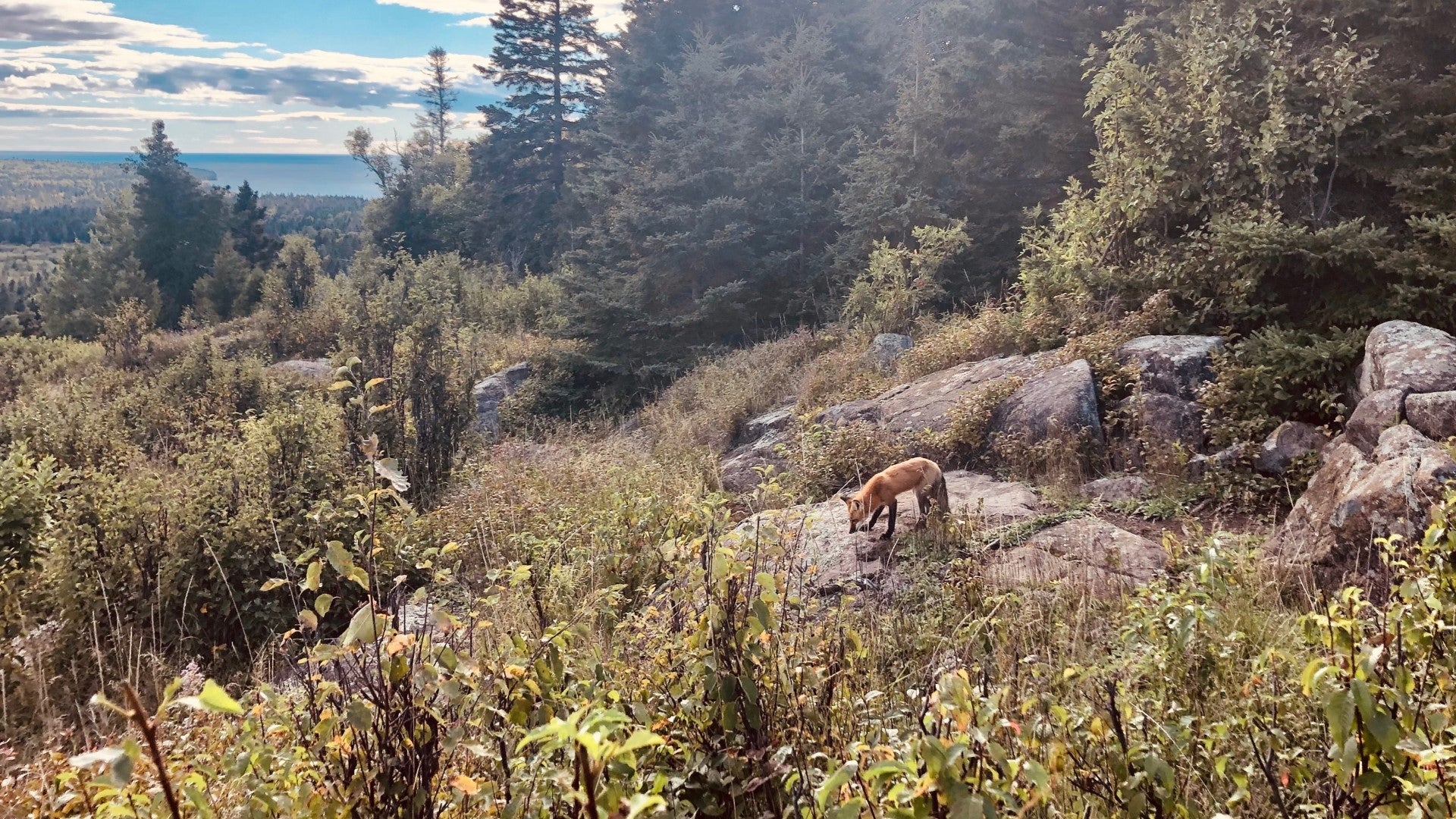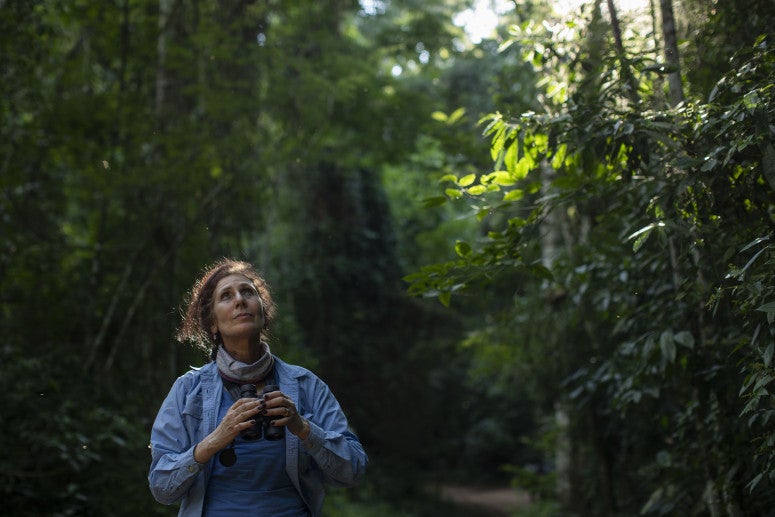Wisconsin’s only state endangered mammal is notoriously difficult to spot, which isn’t surprising since the American marten is very rare.
The small number that exist in the state make their home in a few areas of northern Wisconsin, including the Chequamegon-Nicolet National Forest and the Apostle Islands National Lakeshore.
Wildlife biologists estimate only around 30 to 80 animals live within the complex forests of northern Wisconsin and Lake Superior islands just offshore the Bayfield peninsula. They say one should count themselves lucky to spy the weasel-like animal. The furry critters are about the size of a house cat with beautiful chocolate fur and a throat patch with marbled yellow coloring. They can scurry up and down trees with their semi-retractable claws.
News with a little more humanity
WPR’s “Wisconsin Today” newsletter keeps you connected to the state you love without feeling overwhelmed. No paywall. No agenda. No corporate filter.
So Erik Olson, an associate natural resources professor at Northland College, was intrigued when he received an email of photos from his research assistant. Northland junior Sydni Bennette alerted him to a possible sighting on Madeline Island.
“When I saw it, I was like, that definitely looks like a marten,” Olson said.
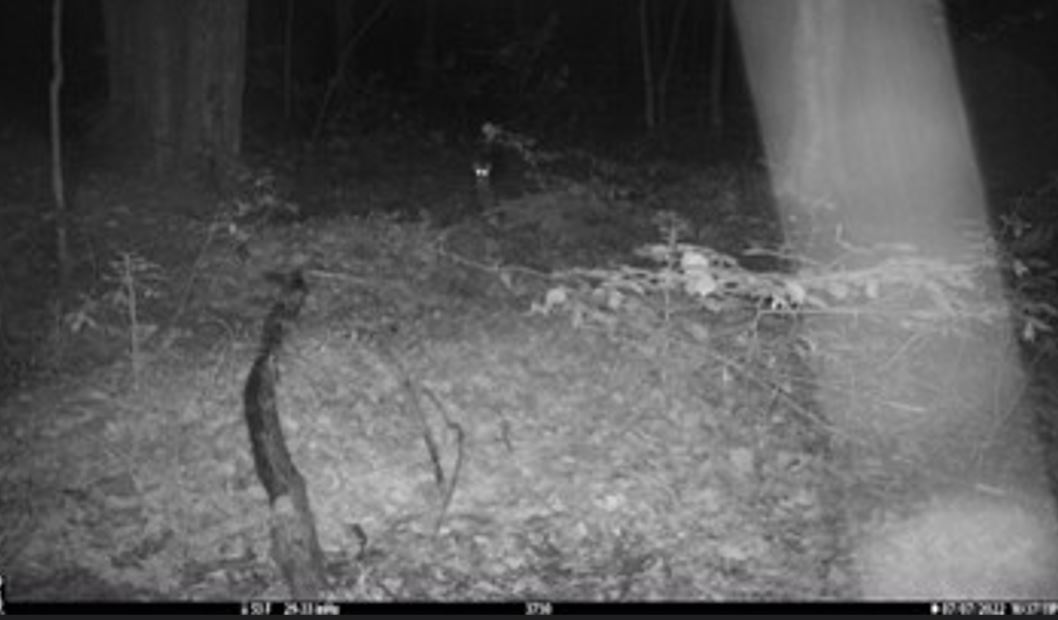
The photos were captured as part of a project to study wildlife called “Wild Madeline.” Olson sent the pictures from a network of 25 trail cameras installed on the island to Jon Gilbert, biological services director with the Great Lakes Indian Fish and Wildlife Commission.
Gilbert agreed it was indeed a marten.
“It’s really exciting to think this is, at least in contemporary times, the first documented evidence of an American marten on Madeline Island,” Olson said.
Olson said it may be 100 years or more since the marten was last seen on the island. The marten, or waabizheshi, is a clan animal that holds significance for Ojibwe tribes in Wisconsin. Sarah Gordon Altiman, or Niigaanosekwe in the Ojibwe language, is a member of the marten clan with the Red Cliff Band of Lake Superior Chippewa.
“It was a very important animal in the sense that it’s considered small, but extremely tenacious, almost vicious, in the way that they battle other animals in the hunt,” she said.
First spotted in the Apostle Islands more than a decade ago, Gilbert said the discovery indicates a positive trend for the species.
“We keep finding them on more and more islands, which is really interesting,” Gilbert said. “To me, that indicates a pretty robust, healthy population, which is a good sign.”
Long extinct in Wisconsin, marten recovery is ongoing
The American marten is a close cousin to the sable, which were sought for their fashionable furs. Jonathan Pauli, forestry and wildlife ecology professor at UW-Madison, said they were extensively trapped for their pelts, which were made into hats and mittens. At the same time, clearcutting of forests dramatically altered the habitat they preferred.
By the 1920s, martens had gone extinct in Wisconsin.
The state began to bring them back through a series of reintroduction efforts beginning in the 1950s. Martens from British Columbia and Colorado were brought to the Apostle Islands, but that effort was deemed a failure. But Pauli said martens naturally recolonized the islands from other sites in Wisconsin and Michigan. So far, they’ve been found on 11 of the 22 islands.
“This most recent camera detection of marten on Madeline Island really begins to kind of complete the colonization of the vast majority of the Apostle Islands,” Paulie said. “Given that Madeline Island is the largest, it’s exciting to see it return.”
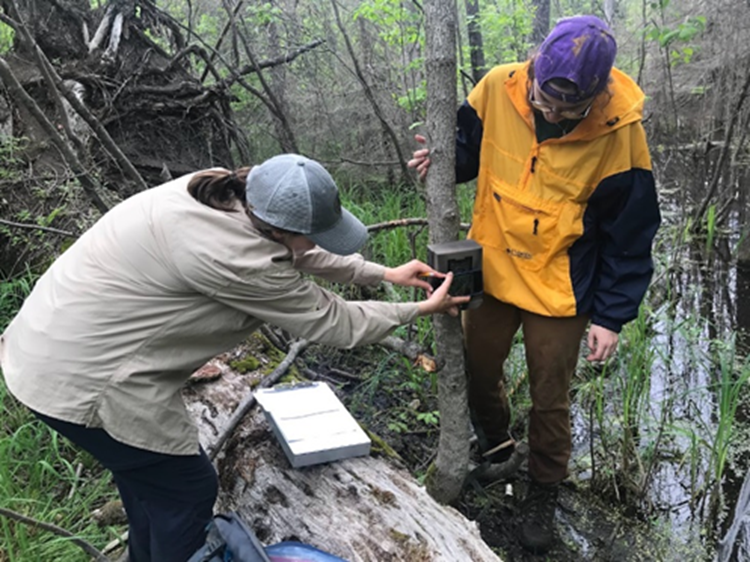
Martens are known to strike out on their own over long distances with a range of around 50 miles. Pauli said the best guess among wildlife biologists is that they are moving between the islands by traveling across the ice.
While few are found, he said their ability to move and reproduce with martens at other recovery sites in Wisconsin can improve the overall viability of the regional population.
“It’s not like by any means we’re out of the woods here with this species,” Pauli said. “But it does mean that we have these populations that appear to be holding on even at small population sizes.”
Could the marten gain a foothold on Madeline Island?
The number of martens detected on Madeline Island remains unclear. Olson said it’s difficult to determine whether the photos captured one or more martens. He said the marten has been spotted at multiple sites within the interior core of the island except for a sighting at Big Bay State Park.
“We’re excited to see how broadly they’re distributed both throughout the island, and if we’re seeing signs of greater abundance,” Olson said.
While biologists are happy to see martens have made their way back to Madeline Island, they’re still not sure whether they can establish a breeding population there.
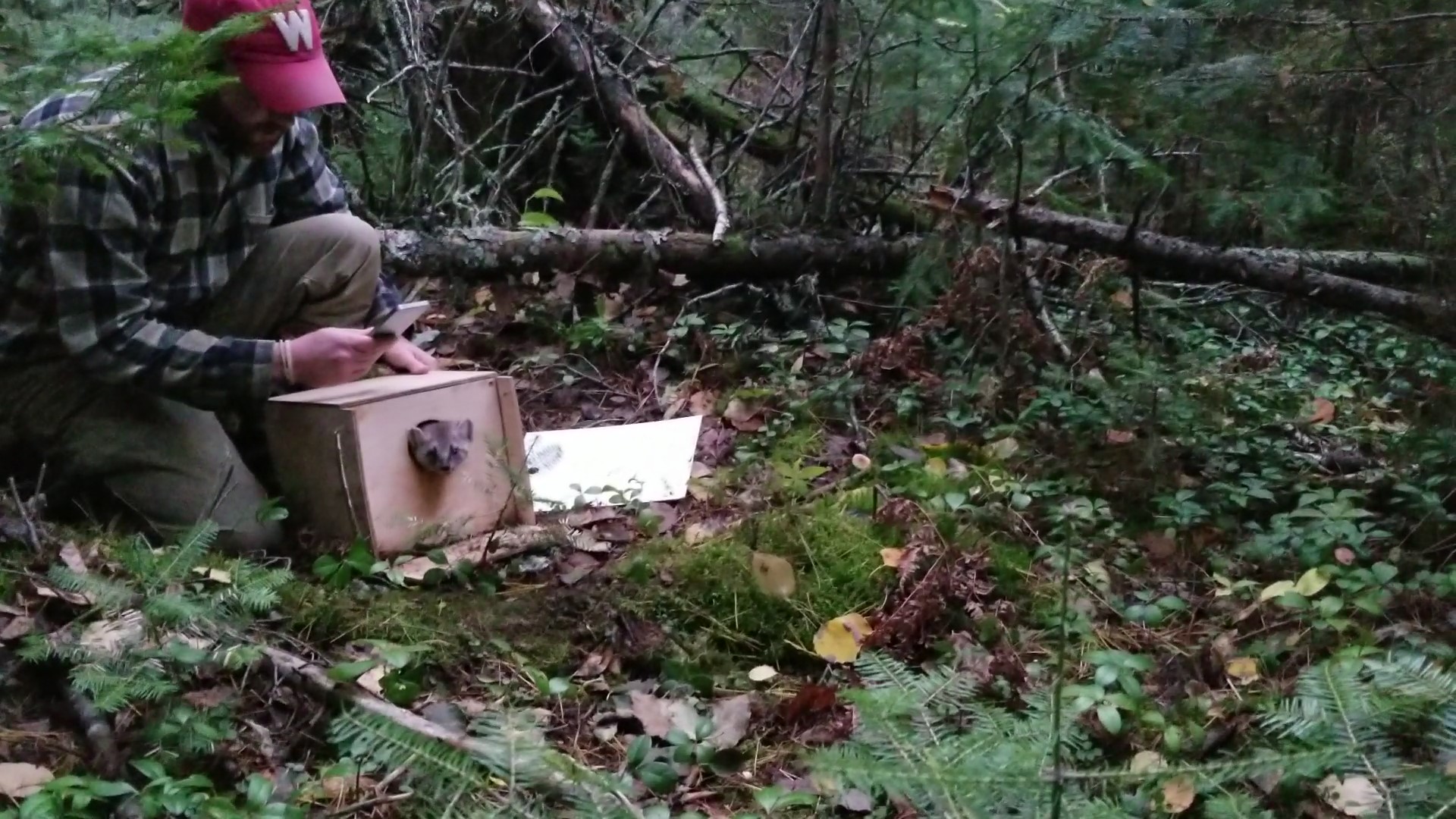
Photo courtesy of Jonathan Pauli
The islands in the area, including Madeline, have the type of complex forest habitat where the animals can thrive. They like a lot of downed trees and woody debris. Canada Yew, an evergreen shrub that hides critters on the forest floor, is also abundant in the understories of the island forests.
Pauli said those settings give martens good hunting grounds for them to pursue and feed on red-backed voles, which are the most abundant mammal species on the islands. The landscape also hides martens from predators like coyotes and fishers.
But there are also deer on Madeline Island. And they could eat up Canada Yew that provides cover for both martens and their prey.
Gilbert said it may be possible for martens to thrive on the island. Or it may be that browsing deer send the animals looking for a more suitable home.
In the meantime, Olson said their research is ongoing.
“We’re continuing to monitor some of the other islands,” Olson said. “That’s always exciting to see where these critters will pop up.”
Wisconsin Public Radio, © Copyright 2026, Board of Regents of the University of Wisconsin System and Wisconsin Educational Communications Board.
